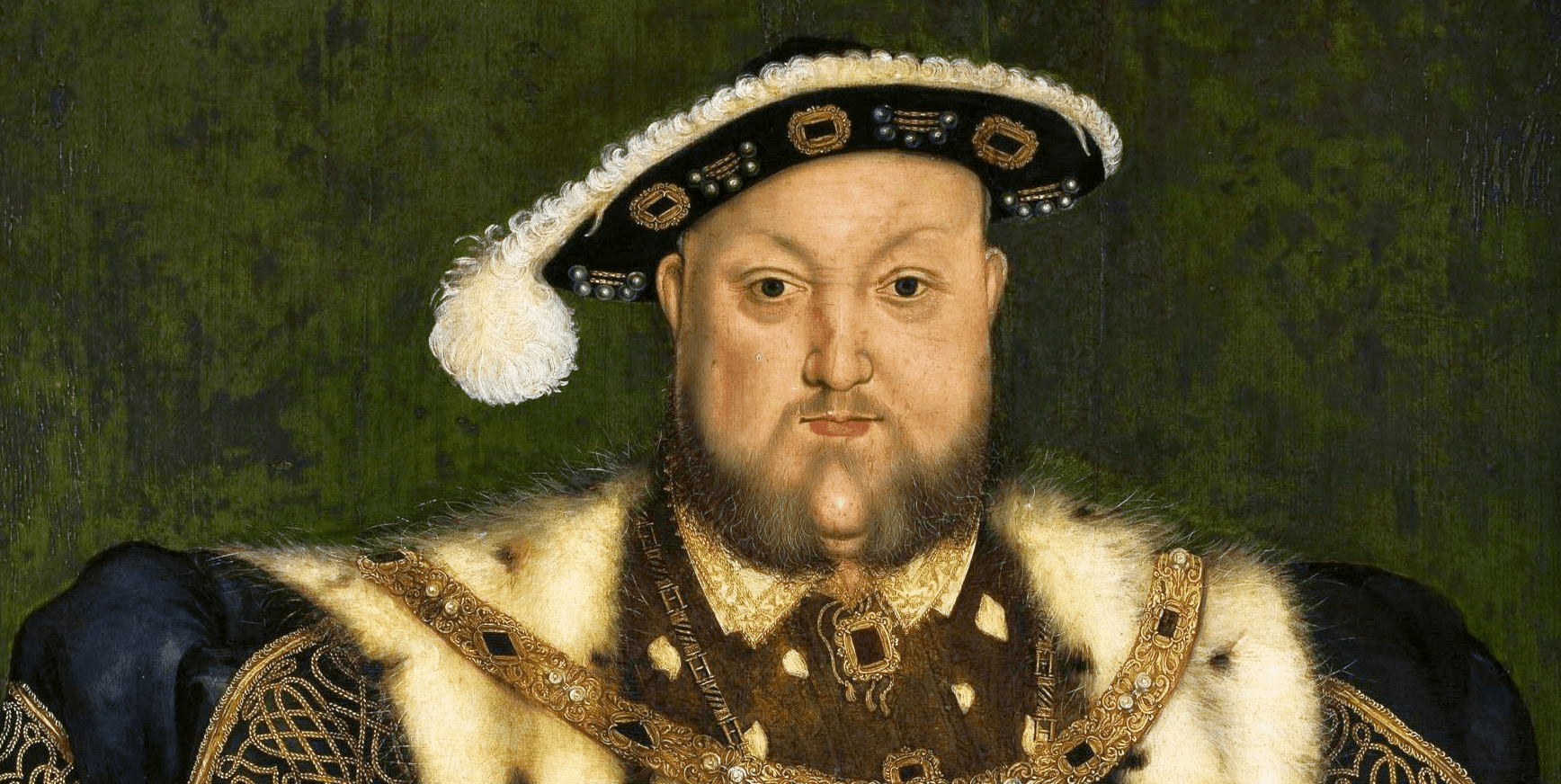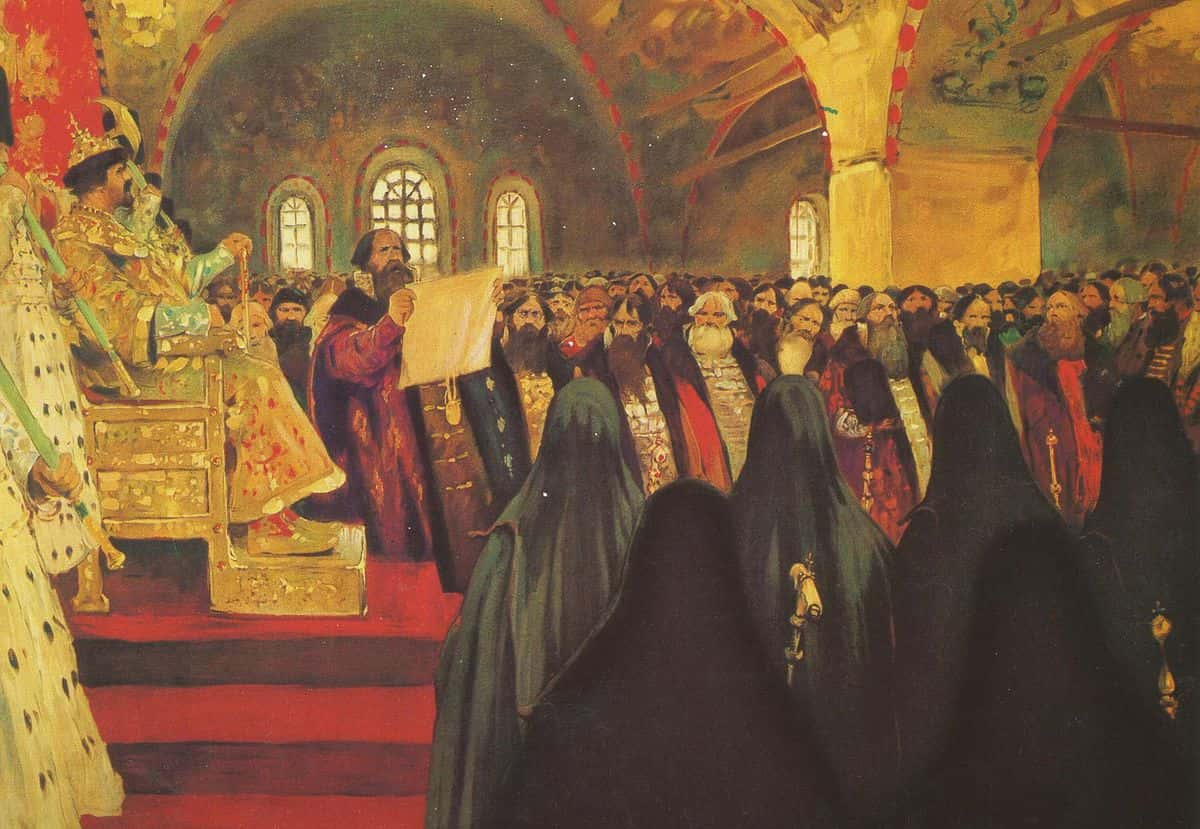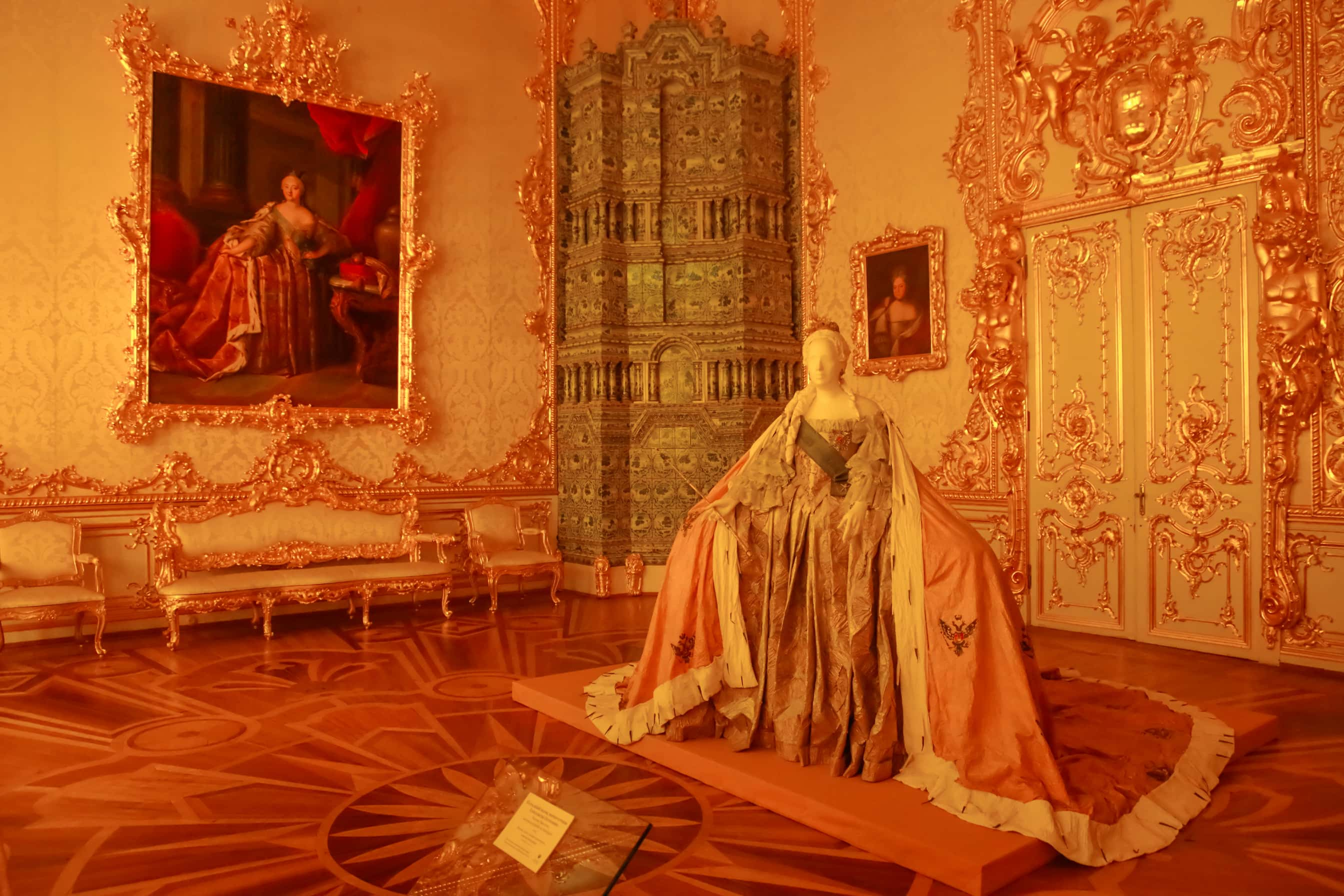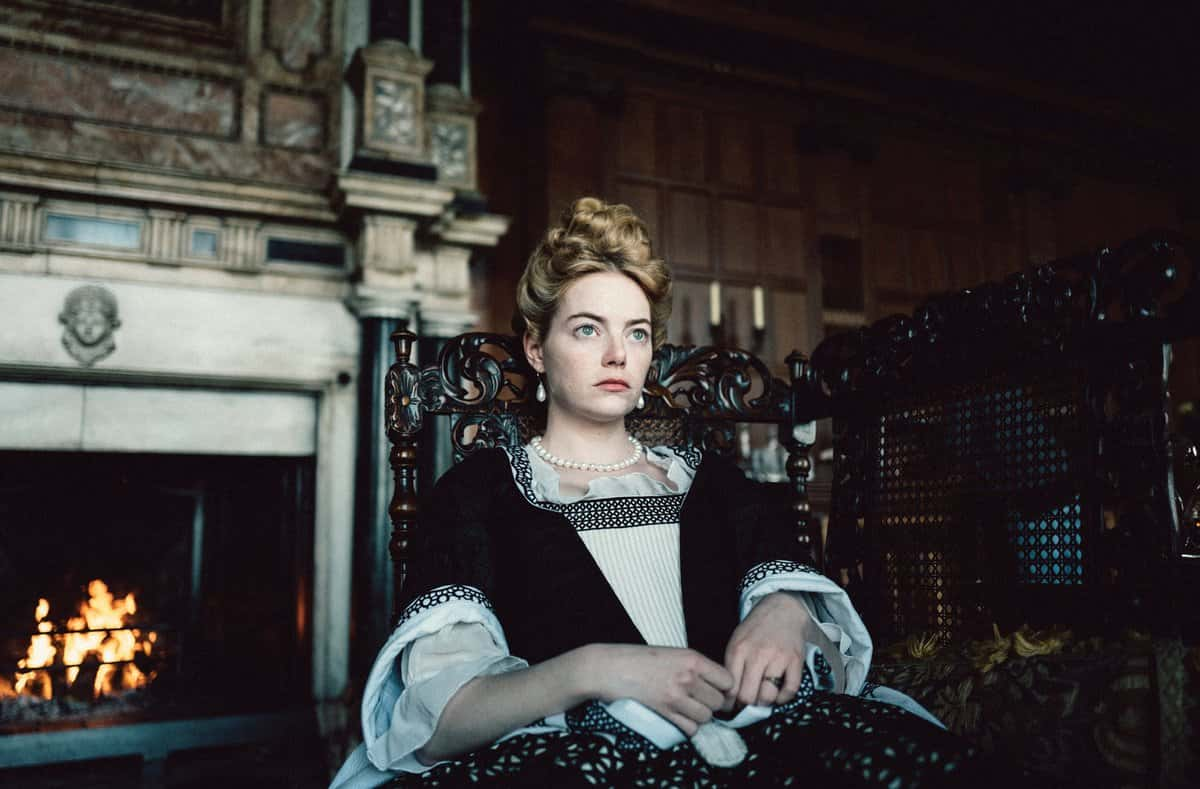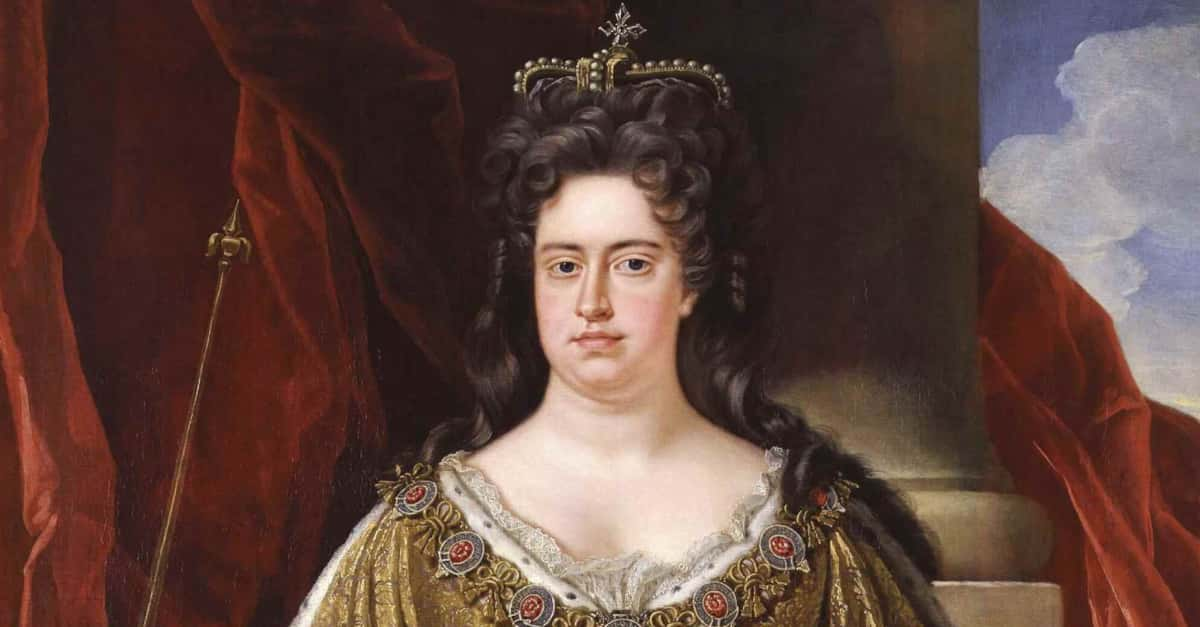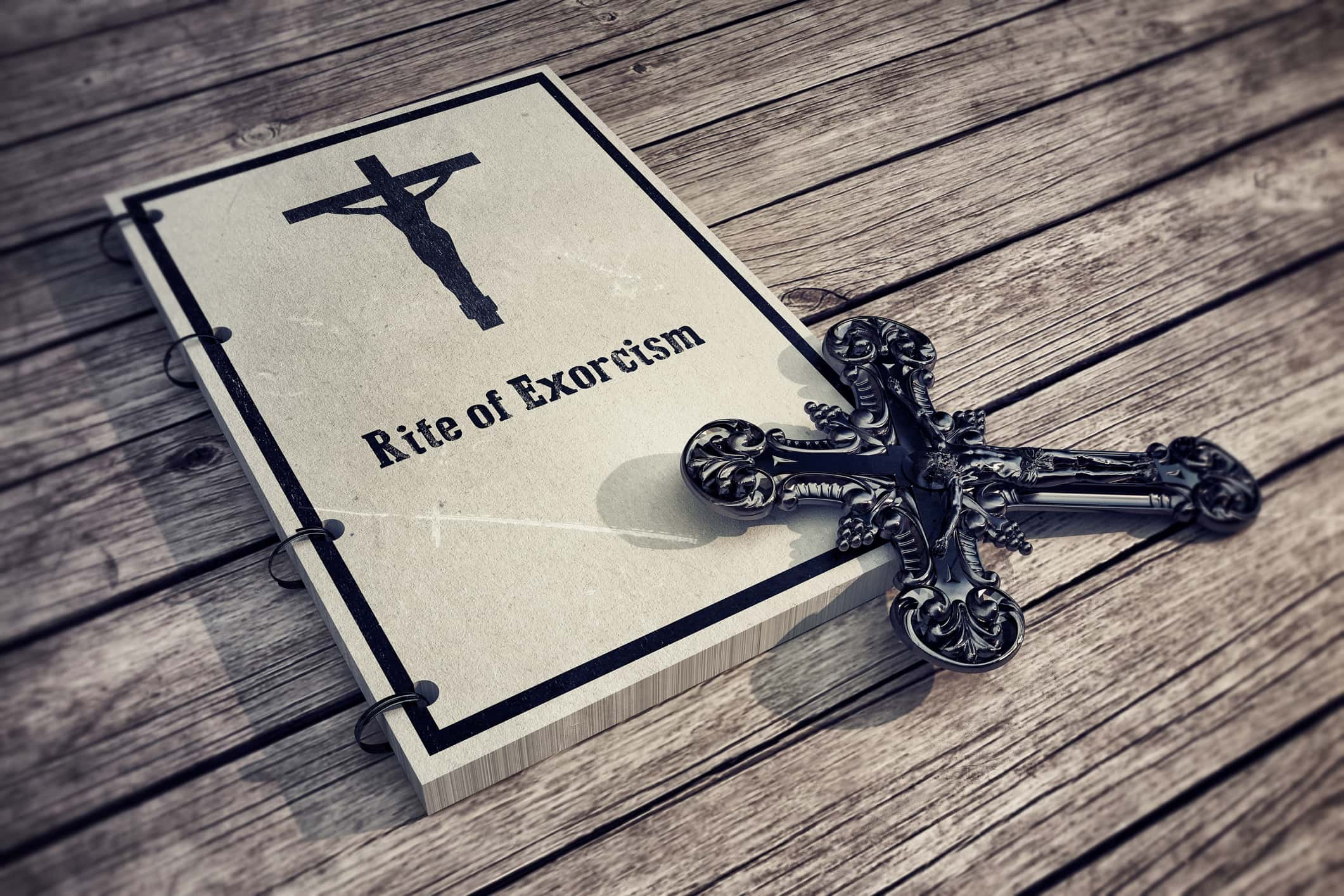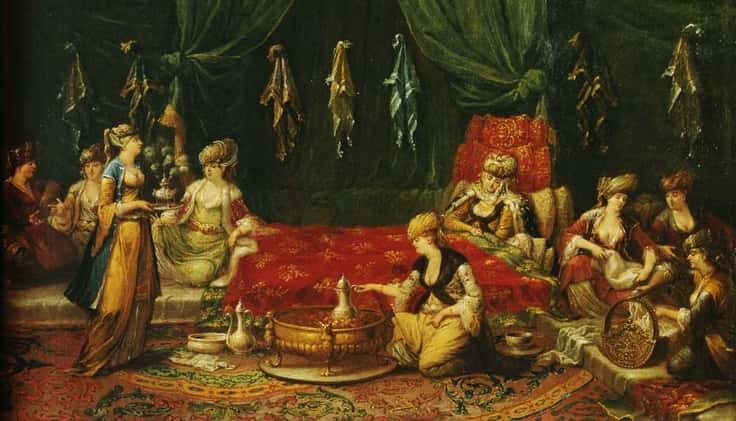Once upon a time, Kings, Queens, Emperors, and Tsars alike were seen as the most divine beings on Earth. But centuries of inbreeding and piles of wealth often went to their heads: history is full of utterly mad monarchs who exploited their power in truly absurd ways.
Here are unhinged facts about history's most insane monarchs.
1. Caligula: A God Among Us
Today, Emperor Caligula's reputation as an unhinged madman precedes him. He took men's lives for pleasure, had intimate relations with their wives, demanded to be worshipped as a living god, and caused a financial crisis with his extravagant and unnecessary spending. Of course, all these actions were just an average Tuesday for Caligula.

2. Little Boots
Born Gaius Julius Caesar Augustus Germanicus, "Caligula" was actually—shockingly—an adorable childhood nickname. When he was a boy, his father brought him along on his battle campaigns and dressed him in a child-sized soldier’s uniform. As such, the men called him "Caligula," which means "little boots" or "booties". Whether it was meant affectionately or teasingly isn’t known, but Caligula apparently hated the nickname.
3. A New Level of Excess
Caligula was obsessed with gold and gilded things. In fact, he allegedly used to pour pieces of gold and other artifacts over the ground to walk on them with his bare feet and to wade in them like water. He was also known to put gold and jewels over his clothes, and even lined the walls of his luxurious palace with it.
4. Of Little Worth
In the various writings about Caligula, nearly all historians agree that he placed very little value on human life. In one story, he was supposedly meant to make a sacrifice to the gods by hitting a bull over the head with a mallet, but at the last minute, he turned and hit the priest instead. He then apparently laughed at the priest as he was dying.
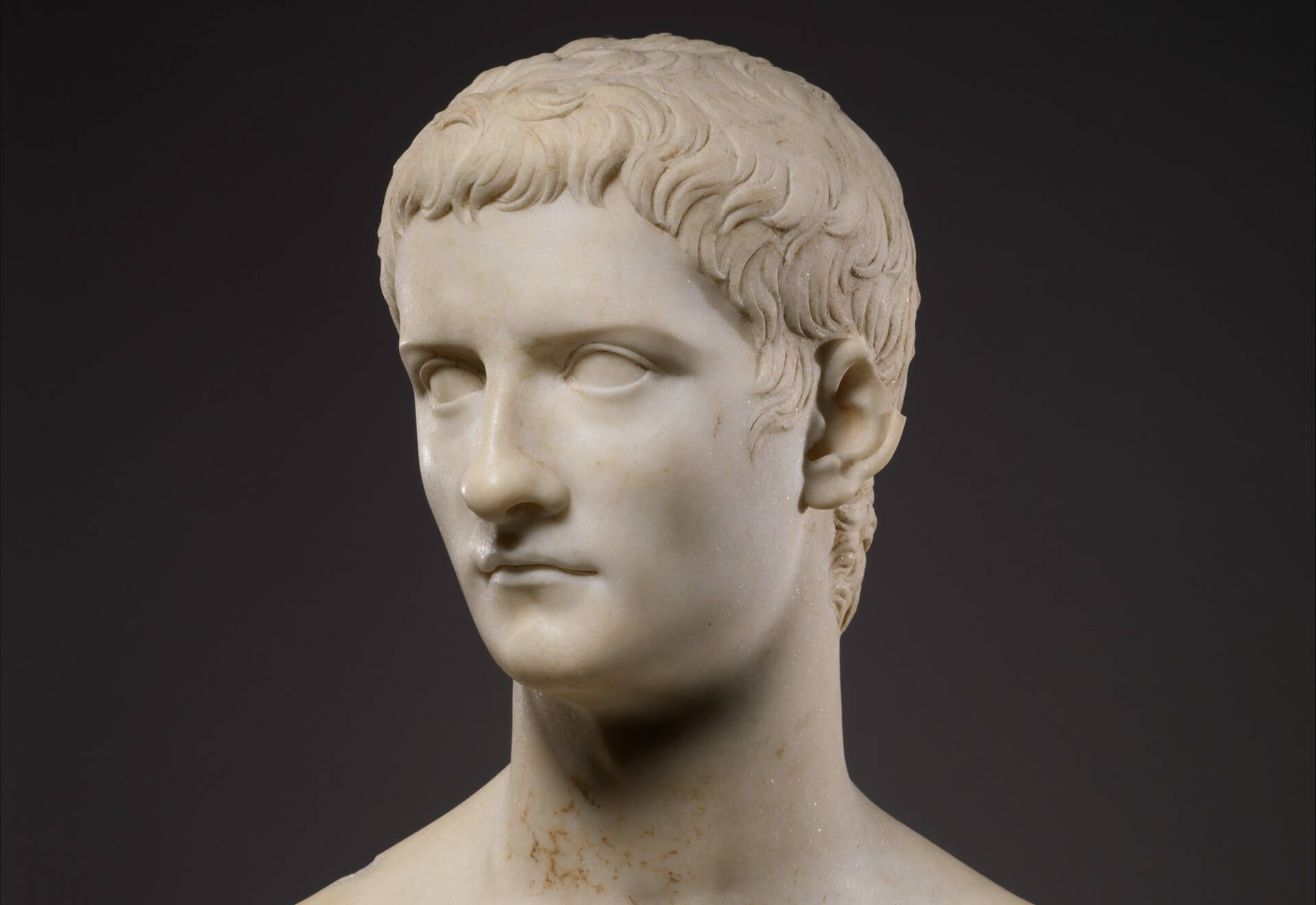 Encyclopædia Britannica
Encyclopædia Britannica
5. There's Nothing in the Rulebook That Says a Horse Can't Be Consul
When it came to his treatment of humans, Caligula was known for his ruthlessness, but there was one creature he revered: He loved his horse Incitatus so much that he gave him his own house with a marble stall and manger made from ivory. Caligula had planned to make the horse a consul as an expression of his total power, but passed on before he had the opportunity.
6. Show-Off
Chariot racing was one of Caligula’s passions, and he was known to personally participate in races and even to sleep in the stables with the horses. He apparently also enjoyed singing and dancing, and liked to show off whenever possible. One story claims that he once called his Consuls to his room in the middle of the night and forced them to watch him sing and dance in nothing but a tunic and a robe.
7. Who Needs to Be Liked?
As Caligula’s behavior became more erratic and cruel, critics began to question his actions. This didn’t bother Caligula, who said in response: "Let them hate me, so long as they fear me".
 Encyclopædia Britannica
Encyclopædia Britannica
8. The Mad Emperor
Approximately six to seven months after taking power, Caligula fell ill, possibly by poisoning, and when he recovered he was greatly changed. Among other things, he began having his family members taken out, beginning with his cousin. His grandmother was incensed with Caligula's actions, but she passed shortly after. Some claimed he poisoned her, while others said she took her own life.
He also had his father-in-law and brother-in-law executed, and his two living sisters exiled. Nice job, Caligula.
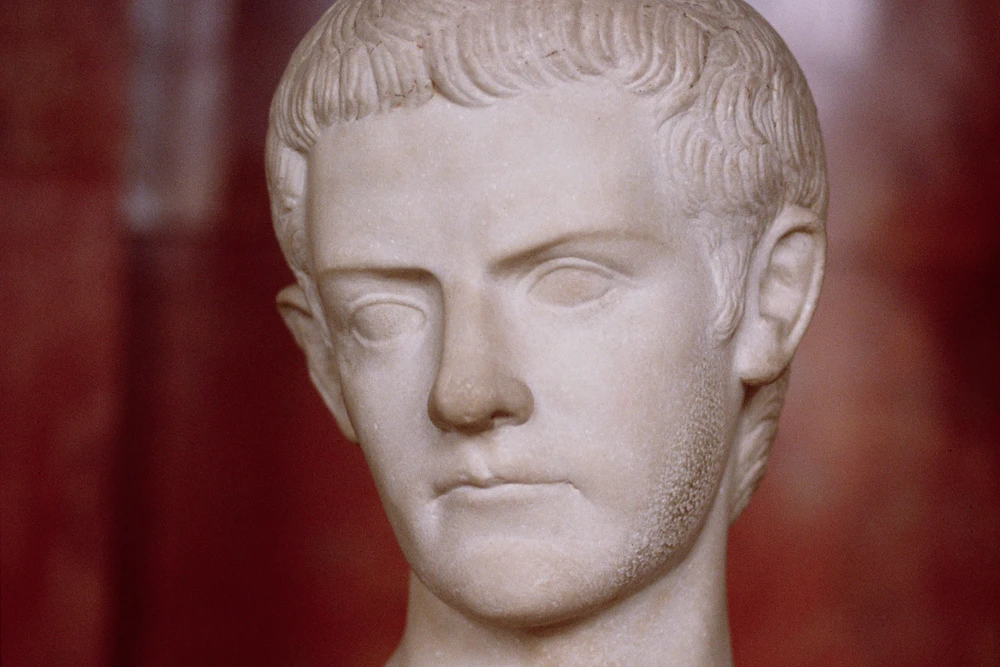 Getty Images
Getty Images
9. First Time For Everything
Caligula was so hated by the Roman people at the end of his reign that the citizens began to demand that he be removed from power. A plot developed within the senate to assassinate the emperor, and on January 24, 41 AD, Cassius Chaerea slashed his throat from behind, followed by a strike to the chest from another man.
The attack on Caligula marked the first time that a Roman Emperor was assassinated. He was skewered 30 times by the Praetorian guards at the Palatine Games. Tragically, his innocent wife and daughter were also executed.

History's most fascinating stories and darkest secrets, delivered to your inbox daily.
10. Erased From History
By the time Caligula met his end, he was so hated that the Senate pushed to have him completely erased from Roman history. Apparently violent murder simply wasn't enough: They ordered the destruction of his statues and public inscriptions, and his coins were pulled from circulation and melted down whenever possible.
 Alamy
Alamy
11. King Henry VIII: The Worst Monarch in History
England has had some terrible monarchs in its time, but according to history writers, King Henry VIII deserves the title of "worst monarch in history". Henry VIII took the majority of the vote in a survey by the Historical Writers Association. While not exactly mad, it's hard to look at his reign and think that he was a very stable man.
12. Small World
It may seem like Henry VIII searched far and wide for a suitable wife, seeing as he infamously married six different women, but he didn’t look as far as you might think: Henry and each of his wives were all descended from King Edward "Longshanks" I, meaning that they were all cousins to one degree or another. He definitely had a type.
13. He’s So Done With Her
In 1516, Queen Catherine of Aragon gave birth to Henry VIII’s first healthy child, Princess Mary. It ought to have been a happy occasion, but her failure to produce a boy disappointed him.
14. Obsession
Henry VIII was consumed by his desire to father a son—something that proved famously difficult for him. Catherine of Aragon bore Henry six children in total, including two sons, but only the future Queen Mary survived infancy. Henry VIII was desperate for a male heir to secure the royal lineage, and he was none too happy.
Catherine's early "failure" to give him a son left Henry in a precarious position, and he started to look for his next wife...
15. He's Got a Type
King Henry VIII’s interest in his future Queen Anne Boleyn was controversial, and not just because he was already married. Henry was actually already having an affair with Anne’s older sister, Mary Boleyn—but it gets even worse. There were also rumors that Henry had bedded Anne and Mary's mother, Elizabeth. When accused of this one, Henry protested, "Never with the mother".
 The Other Boleyn Girl, Focus Features
The Other Boleyn Girl, Focus Features
16. That's "Queen Anne" to You
It took a while, but in 1533, it finally happened: after many machinations and splitting from the Catholic Church, Anne Boleyn became Queen Consort of England, ruling beside Henry like she always wanted. Of course, the power couple had already married each other in two private, very confidential ceremonies, and Anne was already pregnant.
17. Citizen Jane
King Henry VIII always had a wandering eye, and when his marriage with Anne started fraying, he turned his attentions to the pretty, sweet, and submissive Jane Seymour, who would eventually become his third wife. Just like with Anne's sister Mary, Henry liked keeping it in the family: Seymour was also Boleyn's second cousin. Henry considered her his first "true wife".
18. End of the Road
In May 1536, Anne's luck finally ran out. King Henry VIII claimed he had been seduced and enchanted into a marriage with Anne, and ordered her locked up in the infamous Tower of London to await her fate.
19. False Charges
Boleyn was accused of adultery with a handful of men, including her brother George. She was also charged with plotting to murder the king so she could marry one of her lovers. Modern historians agree that the charges brought against Anne Boleyn that led to her execution were false and unconvincing, and that Henry had her executed just because she didn't give him any male children.
20. Which One?
King Henry VIII was a pretty heartless bugger, and as much as people have romanticized his great love for Jane, having a son and heir was always his number one priority. Jane’s labor was difficult, and when asked by an attendant whether he wanted to save the mother or child if it came down to it, his reply was absolutely chilling.
Henry supposedly replied, "If you cannot save both, at least let the child live," followed by the characteristic statement "for other wives are easily found". Priorities, right?
21. Renaissance Tinder
After Seymour's passing from complications after giving birth to Edward VI, Henry VIII began the search for his next wife. In order to choose, Henry was sent paintings of possible partners. He chose Anne of Cleves over her sister Amalia, but was unhappy with his choice when he finally saw her in person. Apparently, she wasn't quite the looker he had hoped for.
He called her a "fat, Flanders mare," and had the marriage annulled after just six months. At least she kept her head!
22. Off With Her Head!
16 days after annulling his marriage to Anne of Cleves, Henry VIII (now 49) married the 19-year-old Catherine Howard, who had been Anne of Cleves' lady-in-waiting. Less than a year into their marriage, rumors of her infidelity began, and after gathering evidence of her promiscuity, Henry had her executed in 1542.
 Wikipedia
Wikipedia
23. Outlived, Outlasted
Henry VIII’s sixth and final wife Catherine Parr managed to not only hang onto her head, she also outlived her husband. Catherine Parr also played a key role in restoring Henry's daughters Princesses Mary and Elizabeth to the line of succession—after Henry had rendered them illegitimate by annulling his marriages to their mothers.
24. Any Last Words?
Despite being known for his vigor and athleticism as a young man, Henry’s massive weight gain and the subsequent decline of his health finally caught up to him, and he passed on in 1547 at the age of 55. His final words are not known for sure, but it has long been rumored that he cryptically cried, "Monks! Monks! Monks!" before his final breath left him.
 Shutterstock
Shutterstock
25. Bloody Mary: A Tithe of Troubles
Although she only reigned for five short years, King Henry VIII's first-born daughter "Bloody Mary" was a busy Queen. As she attempted to reverse the Protestant reforms of her father, Mary had over 280 dissenters of the Catholic Church burned at the stake, earning her the terrifying nickname by which we know her today.
 thissideofthetruth - WordPress
thissideofthetruth - WordPress
26. Devoted Husband
In the summer of 1554, the English court was bracing for news of Mary’s first child. Mary started to show signs of a pregnancy months earlier, and everyone was taking precautions for the next heir to the throne. Her husband King Philip was possibly even planning to marry Mary’s half-sister Elizabeth in the event that his wife passed on (he was a stand-up guy). There was just one problem...
27. False Alarm
Mary wasn’t actually pregnant at all. Perhaps for psychological reasons, she had a rare case of false pregnancy. Tragically, it would not even be her last. During one these episodes, Mary was so convinced that she was with child that she had letters drafted announcing the birth of her heir. They would never be needed.
28. The Grim Reaper Comes For The Queen
Mary met her end, childless, in 1558 during an influenza epidemic. However, the reasons for Bloody Queen Mary’s end are not totally clear, even to this day. Some accounts suggest she succumbed to the influenza outbreak, while others suggest she succumbed to cancer, and that her false pregnancies were actually the result of a tumor.
29. Ivan the Terrible: The Mad Tsar
Ivan the Terrible was officially Ivan IV of Russia. Surprisingly, the word "Terrible" in its original Russian didn’t have the same negative associations that the English word has today. The Russian word, "grozny," could be better defined as "dangerous" or "formidable" in its true meaning. That said, Ivan did some truly terrible things...
 Civilization V Customisation Wikia
Civilization V Customisation Wikia
30. You Win the Contest!
On the way to becoming ruler of Russia, Ivan participated in a ball from which he was to pick his first wife. Hundreds of potential brides were hurried into the Kremlin for their chance. Ultimately, Ivan went with Anastasia Romanovna, who became the first Tsaritsa of Russia—which would not necessarily be a desirable honor, given how things would turn out.
31. Russian, Not a Roman
Since Ivan wanted to impress on his subjects that he was the absolute ruler of Russia, he picked his new title wisely. "Tsar" is a Russian translation from the Latin word "Caesar," and we don’t need to tell you what that means, do we?
32. I Quit!
The 1560s brought on a serious change in Ivan’s behavior after all the tragedies he’d endured, coupled with the paranoia he felt against his own aristocracy. In December 1564, he shocked Russia by leaving Moscow and abdicating. This put his people in a terrifying position, since they were afraid of a peasant uprising (no idea why Russian nobles would ever fear such a thing).
They ultimately begged Ivan to come back and be their Tsar. Ivan agreed, on the condition that he become an absolute monarch with the power to basically do whatever he wanted. Things must have been pretty bleak, because his terms were accepted.
33. Rebound Remorse
A year after his first wife passed on, Ivan married Maria Temryukovna, who was only 17 and perceived as illiterate. Ivan, however, was stricken by Maria's great beauty. The marriage was one of his least successful. Not only did their only child die young—continuing a grisly trend when it came to Ivan’s offspring—but Maria was unpopular and unable to adjust to life in Moscow.
Upon her passing in 1568, rumors abounded that Ivan had poisoned her, though it’s recorded that he went on a witch hunt to find out the true cause of her passing, so the truth will never be known.
34. Classic Overbearing Mother-in-Law
Marfa Sobakina was the "winner" of 12 finalists to become the Tsar’s third wife. However, it was a case of the winner being the biggest loser. Marfa’s mother allegedly gave her a potion to make her more fertile. Unfortunately, the potion ended up poisoning her. She was so ill that she could barely stand on the day of her wedding, but the worst was yet to come.
The poor girl passed a few days later. In the midst of such a disastrous honeymoon, Ivan became more and more paranoid, even ordering his former brother-in-law to meet a gruesome end by impalement.
35. Fighting The Pain
Ivan was known for his bad temper. One theory for his uncontrollable mood swings and paranoia was the mercury that he began to take as a painkiller. The side effects of mercury would justify his unpredictable emotions.
36. Thus Went The Terrible
In March 1584, Ivan the Terrible was quietly playing chess with a statesman in his home when he suddenly collapsed and became bedridden. Even today, it’s not fully known what caused him to die. An old theory was that someone poisoned him in a brutal murder, while many modern-day historians allege that it was a stroke.
37. Joanna of Castile: The Betrayed Queen
Queen Joanna of Castile didn’t become known as "Juana La Loca" for her sound and righteous rule. Yet to what extent was this "mad" Spanish queen simply a victim of bad luck and greed? As a vulnerable female heir to a rich country, Queen Joanna was surrounded by male relatives who had much to gain from her loss of power.
38. Faith Shouldn’t Hurt
I imagine it’s hard to catch a break when your mom literally engineered the Spanish Inquisition. According to some sources, Queen Isabella was deeply enraged by Princess Joanna’s insufficient piety. It’s been suggested Isabella "corrected" her daughter’s religious disposition with physically excruciating methods such as "La cuerda," where Joanna was hung in the air by ropes and weighted down by her feet.
We can’t imagine that felt great—either for Joanna’s body or her mental health.
39. Match Made in Heaven or...?
When she was just 17 years old, Joanna was formally engaged to Philip of Flanders (future Duke Philip I of Burgundy), who was the son of the Holy Roman Emperor Maximillian I. Most noblewomen had very little say in their husbands—but luckily for Joanna, her fiancé was only a year older than her and already known as "Philip the Fair" for his hot looks.
40. Not Enough Room in This Bed for All of Us
Joanna’s marriage to Philip was one of mutual but lopsided passion. Joanna worshipped him; Philip found Joanna beautiful and charming, but not worth staying faithful to. Her Burgundian beau quickly began to see other ladies on the side. His infidelities often sent Joanna into jealous rages and depressive tailspins—and as we'll see, they were the least of his betrayals.
41. Going out for a Pack of Smokes…
Some men can’t handle their wives making more: the pressure of being Castile’s heir and future Queen put a strain on Joanna’s marriage to Philip of Burgundy. He had moved his court to be with Joanna in Castile as the country’s heirs, but their arguments intensified until he eventually left Joanna pregnant and alone in Madrid.
42. Time to Unwind
As you might expect, Joanna did not take Philip's abandonment very well at all. In a dark omen of things to come, she fell mentally and physically apart when he left: The heiress indulged in the rather unroyal conduct of crying herself to sleep every night, refusing lavish meals, and flinging her royal body against the walls.
43. I Hope This Doesn’t Become a Habit…
Joanna frantically wished to follow her husband, who had retreated to his home in Flanders. Unfortunately, her mother Queen Isabella strictly forbade it, and had Joanna sequestered to her rooms in the Castle La Mota at Medina del Campo. It was there she continued her mental breakdown—and things took an even darker turn. She began pacing all day, babbling in tongues, and still denied herself food and sleep.
Of course, there's another, darker side to her madness that we'll get to later...
44. Too Much off the Top
During Joanna's period of abandonment with Philip, her mother eventually allowed her to follow him back to Flanders. She arrived home to the worst possible sight: Philip had taken an in-house mistress. Not one to be usurped without a fight, Joanna allegedly started hacking off her rival’s hair with scissors. When this act of savagery failed to heal Joanna’s heart, she simply cut the woman in the face.
45. Here Lies One Lifeless Bro
The pivotal tragedy of Joanna’s life occurred in 1506: her beloved Philip passed on suddenly at the tragically young (but still beautiful) age of 28. The cause of his untimely passing was ostensibly typhoid fever…but it was believed by many—including a very paranoid Queen Joanna, reportedly—to be the result of poison.
46. A Matter Of New Life And Death
When her beloved (and traitorous) husband Philip passed on, Queen Joanna didn't just grieve in the normal way; in fact, it sent her into her worst emotional tailspin yet. For a considerable period, she refused to leave her husband’s already-embalmed body. During this time, she was pregnant with their final child, Catherine.
47. Together Forever and Ever and Ever…
But it gets worse: the widowed Joanna couldn't even accept Philip's mortality after he was buried and in the ground (at her father's insistence). Shortly after his passing, she reportedly ordered his body exhumed, had the casket opened, jumped to his side once again, and kissed his dearly departed feet. From this point, wherever Joanna went, so did Philip’s casket.
48. Eternally Hers
Joanna’s jealousy over Philip’s love also continued after his demise. While "accompanied" by her late husband’s casket, it’s rumored Joanna would only travel at night; she didn’t want other women tempting Philip of Burgundy’s body during those sexy daytime hours. Her entourage avoided nunneries for this reason—you can never be too careful, even around holy sisters.
49. You’ll Always Be With Me
For the most part, Joanna had the sense to keep her husband’s casket closed. It was simply transported to be with her at meals and her bedside. She only occasionally opened it to gaze upon her beloved’s pretty (and rapidly decomposing) face. Only years later was Philip finally laid to rest again. Of course, this was apparently right outside of Joanna’s window, where his notorious eye could wander no more.
50. No One Likes a Chatterbox
In her final years, a paranoid Joanna even accused a group of nuns of trying to kill her. As the queen’s mental and physical state continued to deteriorate to levels still unknown and unmeasured today, her son King Charles simply told her keepers to limit his mother’s conversations with other people, "for no good could come from it".
51. I’m Big Enough to Say, "She’s Crazy"
Joanna's insanity, however, has an even darker and more personal side: Recent scholarship has suggested Joanna’s own beloved husband spread the rumors of his wife’s "insanity". While Joanna’s real behavior hardly helped, the ambitious Philip had incentive to push the image of his wife as an incapable ruler. He was certainly insecure about his role in Joanna’s regime and looked to usurp her authority.
52. King Ludwig of Bavaria: The Mad Dreamer
Though he was a pretty ineffective ruler, King Ludwig II of Bavaria’s popularity never wavered. He was broodingly handsome and frequently rode the countryside in disguise, giving gifts and large sums of money to the kindlier and more hospitable farmers he met along the way. To the Bavarians, Ludwig was the ideal romantic hero.
To those who really knew him, Ludwig's true nature was much darker.
 iCollector
iCollector
53. Break-ups Are Hard
In 1867, Ludwig became engaged to his cousin, Duchess Sophia of Bavaria. Sophia was the sister of his beloved friend, Elizabeth. After several postponements, the engagement was finally broken off in October of that year. While no reason was ever announced, Ludwig claimed in a letter to Sophia, "your cruel father has torn us apart!"
 Pinterest
Pinterest
54. King of the Castles
Ludwig II’s crowning achievement was Neuschwanstein Castle. Sitting at an elevation of more than 2,000 feet on a hill overlooking a quaint German village, the castle notably provided the inspiration for Sleeping Beauty’s castle at Disneyland. Construction of Neuschwanstein began in 1868, and was not completed by the time of Ludwig’s tragic passing in 1886.
55. By Unanimous Decision
Fearing for their ruler's health (and desirous of his power) after his castle spending spree, Ludwig's ministers ended up assembling a team of psychiatric assessors led by Dr. Bernhard Von Gudden, who quickly ascertained that Ludwig was mentally unsound. Though they never spoke with Ludwig personally, they confirmed the king’s mental state.
Their evidence? His habit of wearing a coat in summer but eating outdoors in winter, his rough manner with his servants, and his reckless spending.
56. The Siege
With Ludwig declared mad, the ministers were free to depose him, and sent a commission to arrest Ludwig and place him in the custody of Dr. Von Gudden. Ludwig holed up in Neuschwanstein with a private army for two days while 36 armed guards surrounded the castle. He was finally caught trying to escape the premises.
When taken by the authorities, he said to Von Gudden, "How dare you declare me insane? You’ve never examined me before!" Insane or not, Ludwig had a point.
57. The King's Closet
Ludwig never did marry and had no known mistresses. Close friendships with a number of men, especially with his chief equerry, led many to suspect that Ludwig was gay. Ludwig’s private diaries strongly suggest that Ludwig did indeed prefer the company of other men, and reveal that he struggled to reconcile this with his devout Catholicism.
58. French Kiss
At one of his residences, visitors could see the signs of Ludwig’s eccentricity turning into full-on madness. He had a large statue of Marie Antoinette in the front hall whose cheek he would caress and kiss as he passed; servants often heard him from the other room, speaking with the statue. But that was really just the beginning.
Soon he began insisting extra places be set at his table to make room for departed French monarchs, and he started claiming that he was the heir to France through Louis XVI.
59. Catherine the Great: Violent Delights
Catherine the Great married into her royal, wealthy station after tying the knot with Peter III of Russia. But Catherine spent much of her early married life not with her husband, but rather riding her horse. She also refused to ride side-saddle, and wrote "The more violent the exercise, the more I enjoyed it".
60. Not a Match Made in Heaven
Catherine and Peter’s marriage was rocky from the start. Peter was immature and preferred his toy soldiers and mistresses to his wife.
61. Lofty Ambitions
Unsurprisingly, Peter was a pretty bad ruler, and he was unseated in favor of his son Paul, with Catherine installed as Regent. However, Catherine wasn't ready to fade into the background. She gathered support and declared herself Catherine II, the sole ruler of Russia—But Catherine was really just beginning.
62. Foul Play?
Catherine then had Peter locked up, and forced him to fully abdicate his position as Emperor. A few days after he abdicated, Peter just so happened to be taken out by one of Catherine's co-conspirators. The exact role Catherine played in his end has never been proven, but it’s possible that she arranged it—and had her own husband's blood on her hands.
63. Pays to Be her Lover
Catherine was extremely generous toward her lovers. She would gift them with titles, lands, palaces, and even people, once giving a lover 1,000 serfs. But becoming a lover of Catherine the Great was no easy task. According to several historical records, in order to become her lover, there was an intimate test. Before being welcomed into Catherine's bed, prospective suitors had to first satisfy Catherine's lady-in-waiting, Countess Praskovya Aleksandrovna Bruce.
64. Myth Busting
Catherine had many dark, but ultimately unprovable, rumors follow her around. Some juicy wish-they-were-true examples: that she kept her hairdresser in a cage to keep her wig a secret, and that she advocated for having intimate relations at least six times a day, claiming that it helped her relieve her insomnia.
65. A Good End
Gossip had a tendency to follow Catherine wherever she went, and continued to follow her even after her passing. Her enemies at court spread rumors about her end, with some claiming she’d met her end on the toilet, and others that she’d passed while engaging in intimate activities with a horse. None of those were true: she passed on in her bed the day after suffering a stroke, at the age of 67.
66. Vlad the Impaler: A Bloodthirsty Dracula
Vlad III, known as Vlad Țepeș, Vlad Dracula, or Vlad the Impaler, was the prince of Wallachia (modern day Romania). His cruel methods of punishing his enemies—particularly, you know, impaling people on sticks—gained him infamy, but he still remains a folk hero in some parts of the world, particularly for his role in combatting the Ottoman invasion.
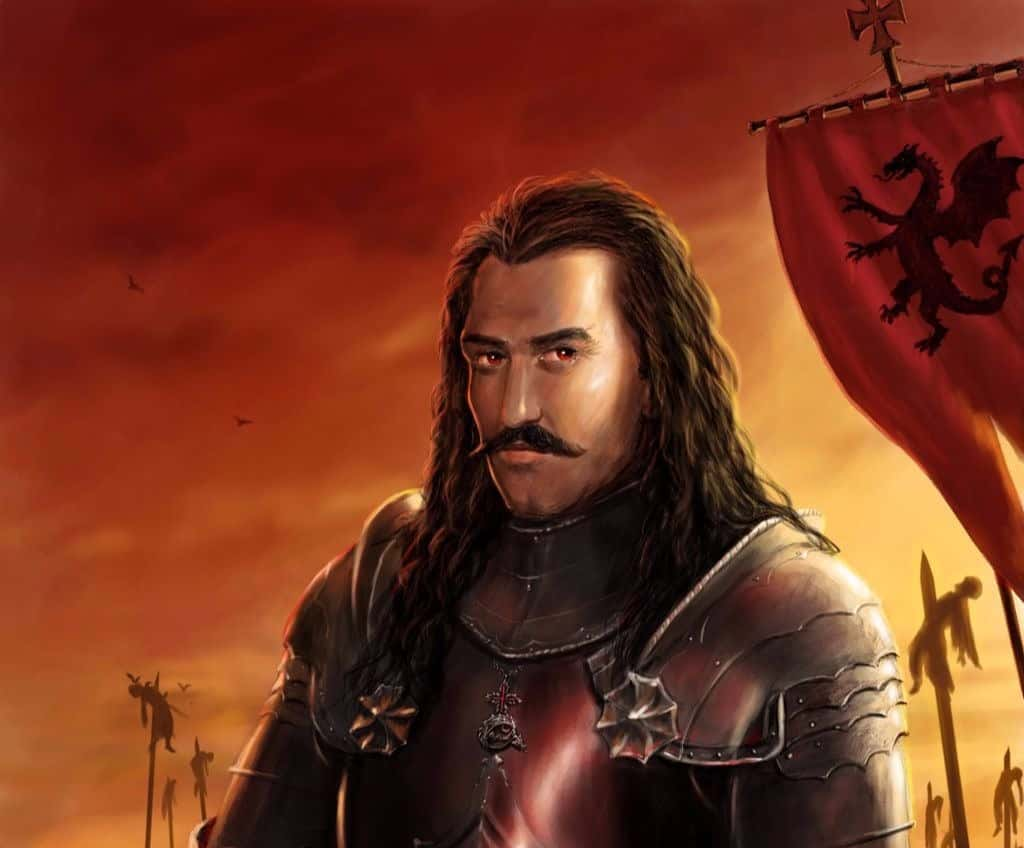 Pinterest
Pinterest
67. Hit and Run
One of Dracula’s favorite battle tactics was to ambush the enemy with lightning attacks on horseback, impale enemy combatants, and then get the heck out of dodge as fast as possible. He apparently did this to compensate for his relatively small army (compared to the Turks) and limited resources. Vlad: cruel AND smart.
68. Alike in Name Only
Scholars have long connected Vlad Dracula to Bram Stoker’s famous novel Dracula, but beyond the use of the name and a loose connection to Transylvania, there’s little evidence that the character was specifically based on the real Dracula. Nonetheless, by the time Stoker wrote the novel, stories of Vlad's malice had pervaded culture.
69. Back at It Again
According to David Carroll, on Easter Day in 1456, Dracula invited the regional nobility to dinner. Following the meal, he had the old and infirm executed, and marched the rest 50 miles to the dilapidated castle he took as his own. He forced them into hard labor restoring the castle, and those who didn’t die of malnutrition or exhaustion were impaled outside the castle when the restoration was complete.
So yeah, a slight variant on his usual schtick. I don't know what to tell you...You don't get the name "Vlad the Impaler" without, like, impaling a ton of people.
70. Queen Anne: The Tragic Queen
Queen Anne of England was the first ruler of the newly unified Great Britain. However, she was wracked with illness and insecurity, and often depended on her best friend, Sarah Churchill, to make important decisions. For many, Sarah was the one who secretly ruled the direction of the country when Anne was queen.
71. The Pretender
Anne courted a bit of a nasty love triangle when she allowed a lowly maid, Abigail Masham, to become a close acquaintance—a position that Sarah Churchill felt was hers and hers alone. Sarah was so upset with Anne’s closeness to Abigail that she was the only person in the court not to wear mourning dress when Anne’s husband passed on.
72. Guess What I Heard
From the beginning, Queen Anne was something of a gossip. And she also detested the Catholic Church. Put those two together and you have a potent cocktail. When Mary of Modena, King James’ Catholic wife, became pregnant, Anne started a rumor that she was faking the pregnancy. Mary, Anne whispered, was going to swap in a fake son at the last minute to ensure a Catholic lineage to the throne of England. This, of course, was not true.
73. No Doubt A-Gout It
Anne struggled for good health almost her entire life, so it was almost fitting that she was not feeling her best during her coronation. At the time she was crowned Queen, Anne was suffering from an attack of gout. She had to be carried to the throne in an open sedan chair that had a low enough back to allow her six-yard-long train to reach her ladies behind her.
74. The Final Square off
Afflicted with gout and dropsy, Queen Anne could barely walk by the last years of her life. Her body was so bloated, her royal coffin was shaped like a square.
75. Empress Wu Zetian: First of Her Name
Empress Wu Zetian was China’s sole female ruler, but her rise would fit in perfectly on Game of Thrones. She started as a concubine of Emperor Gaozong, and eventually gave birth to his child. When the baby passed soon after, Wu blamed its passing on the reigning empress consort, Empress Wang. But that may not be the full story: disturbingly, some historians believe that Wu strangled the child herself.
76. Vicious Cycle
Wu has become infamous in the (male) annals of history as a cunning, ruthless woman, especially after she shoved aside her children and declared herself Empress in 690, founding her short-lived "Zhou Dynasty". One source described her as hated by "gods and men alike," which really sums up how much people despised her.
77. Mad King George: The Tragic Fool
Throughout history, "Mad King" George III became famous for his struggle with mental illness. Several accounts of George’s madness still exist, though we don’t know if they’re all true. George is said to have had episodes where "he became seriously deranged, sometimes speaking for many hours without pause, causing him to foam at the mouth".
One of the more extreme stories involved George confusing a tree for the King of Prussia and trying to shake hands with it.
78. Nice to Meet You
After several potential brides were turned down for one reason or another, George eventually married Princess Charlotte of Mecklenburg-Strelitz. Incredibly, the first time the two ever spoke to each other, or even laid eyes on each other, was their wedding day! Luckily for the two young monarchs, they were both considered rather attractive.
79. Come Back, Amelia!
George didn’t make it a secret that his youngest daughter, Princess Amelia, was his favorite child. After her tragic passing at just 27 years old, and during George’s bouts of insanity, George would often beg for her presence, speak to her as if she was in the room, or he would claim that she was visiting family members in Hanover.
80. The King’s Breakdown
By 1810, George’s condition had worsened immensely. He was suffering from rheumatism, and cataracts left him nearly blind. After the Regency Period began in 1811, George developed full-on dementia, was blind and deaf, and was unable to comprehend when his beloved wife passed on in 1818. Perhaps it was a kindness when George himself followed her two years later, dying in 1820.
In the final few weeks of George’s life, to add insult to injury, he even lost the use of his legs.
 GettyImages
GettyImages
81. What’s the Culprit?
It remains unclear what sort of mental illness George suffered from in the latter part of his life. Based on his behavior, people have suggested bipolar disorder or porphyria. In 2005, one of George’s hairs was examined, revealing a surprisingly high amount of arsenic. What caused this level of arsenic to be present is unknown, but it has been offered as a cause of George’s mania.
 GettyImages
GettyImages
82. King Charles VI: From Beloved to Bonkers
King Charles VI ruled France for decades and began his reign as Charles the Beloved. Things started to go south when he was suddenly struck by a bout of insanity. As his periods of delusion grew longer and longer, he eventually gained the chilling moniker Charles the Mad. Read on to find out what went wrong with this once-beloved monarch.
83. Insane in the Membrane
As a young man, Charles seemed like a perfectly normal dude, never exhibiting any signs of mental or physical illness. That changed in 1392. That year, when he was 23, he contracted a fever that made his hair and nails fall out and caused convulsions. The illness also seemed to do something to his brain, because he was never the same after. He ended up suffering from various psychoses for the rest of his life.
84. Frightened in the Forest
In 1492, during a hunting trip in the forests near Le Mans, Charles was approached by a raving old man who warned him that he was being betrayed. A short while later, one of his men-at-arms dropped his lance, startling the king and sending the already unhinged monarch into an insane and tragic rage.
Without any warning at all, Charles suddenly grabbed a sword and started slicing and dicing, claiming that he was under attack by traitors. He managed to kill four of the knights in his hunting party before falling into a 48-hour coma. Needless to say, the trip ended right there, and Charles was brought back to France in chains for his own safety. Who knows what he might have done otherwise.
85. Shattering
Beginning around 1400, Charles started suffering from an affliction known as the "glass delusion". For whatever reason, the king thought he was made of glass and would shatter if anyone touched him. During these bouts, he would sit completely still for days at a time, kept the windows closed to keep the wind from blowing in something that might break him, and forbade anyone from touching him or coming near him.
At one point, he even had iron rods sewn into his clothes to keep himself from breaking.
86. Finding a Surrogate
Charles’ frequent bouts with insanity had his wife Queen Isabeau fearing for her life. During his insane periods, he apparently developed a major hate-on for his queen, and he’d throw anything within reach at her while screaming profanities. She was also subject to frequent beatings and other abuses, leading her to take the extreme step of allowing the king to find a mistress.
According to some sources, she even went as far as to arrange her for him. How generous of her.
87. Seeking a Cure
One of the ways in which doctors attempted to cure Charles of what is now believed to be schizophrenia was by drilling small holes into his skull to relieve pressure on his brain. That didn’t help (other than maybe to give him a headache), so the desperate doctors tried something different. They called in officials from the Catholic Church to perform an exorcism.
88. Odette! Odette!
Charles’ mistress Odette was at his side in his final moments, and the last words he allegedly spoke were her name. At the same time, wife Isabeau apparently did not even attend his funeral—but with everything he put her through, can you blame her?
89. Ibrahim The Mad: The Unhinged Sultan
Ibrahim "the Mad" was a Sultan of the Ottoman Empire. As one might guess, he was known more for his fits of lunacy than for his even temper. Inheriting the throne in 1640, Ibrahim also came into a dynasty in turmoil—but he was not about to let a thing like "political instability" and "armed coups" stop him from making up for lost time.
And what did a "good time" look like to Ibrahim? Harems, fur, taxes, and even more fur.
90. Mr. Lonely
Ibrahim came by his insanity honestly: he grew up in a glorified cage. At the age of two, his relative the Sultan Ahmed I put him and his other male cousins in a luxury prison called a "kafe". This seclusion was meant to minimize threats of rebellion against the sitting ruler. Unfortunately, such isolation from society cannot have been good for a prince’s mental health.
91. Brother, Can You Spare a Life?
Ibrahim was actually very low in the ranks when it came to inheriting the throne. But he managed to survive through a little luck and a lot of tragedy: Simply put, he was the youngest boy in a time when Sultans were a bit trigger-happy to execute their next oldest brothers. In fact, he saw two of his brothers executed before he was even five years old.
92. Show Me the Body
Ibrahim thought his survival was too good to be true. When state officials came to crown Ibrahim upon his brother's passing, the future Sultan refused to believe them and actually thought they were playing a trick on him so they could then execute him. When they brought him his big brother’s body as proof, Ibrahim literally danced out of his cage in relief.
93. Do or Die
Early in his reign, there were fears that Ibrahim might not be "capable" of taking consorts and continuing the royal line. He found it difficult to "perform" with concubines, despite his mother’s supply of aphrodisiacs.
94. Boast With the Most
Rumors of Ibrahim’s intimate tastes may have been exaggerated. Some say he slept with as many as 24 concubines in a single day, which is extravagant even by Playboy Mansion standards. When you read about his health problems, that sounds unlikely…but he did father 18 children, so maybe it’s not entirely impossible.
95. Bald Ambition
The great love of Ibrahim’s life was fur. According to some sources, he would shave his own cats and insist that capes were a much better use for their sable fur. I’m not sure they would agree.
96. Hair Is Fair
For his wedding to his favorite concubine, Ibrahim ordered a lord to carpet his entire palace in furs—and then surrender said furry abode to the Sultan’s new bride.
97. Throwing the Fatherhood Race
After the birth of his first son, Prince Mehmed, Ibrahim became fond of his wet nurse’s son, who was healthier than his own prince. The prince’s mother became jealous and dared to complain to the Sultan. In response, Ibrahim flew into a rage, took Mehmed from her arms, and threw the infant into a pool. Thankfully, Mehmed didn’t drown. However, some say the boy carried a scar on his forehead for the rest of his life.
98. Giddy up
One of the more popular chronicles of Ibrahim’s tastes leaves very little to the imagination: some say Ibrahim liked to chase unclad women around his garden. It’s not an unpopular male fantasy, until you get to the part where he did this while "neighing like a stallion". What ever floats your boat there, Ibrahim...
99. King Herod: A Villain of Biblical Proportions
To many Christians, King Herod is the bloodthirsty villain of the Bible, the jealous despot who ordered the slaughter of newborn babies throughout his kingdom following the birth of Jesus Christ. To his Roman masters, he was little more than a puppet-king. Throughout history, opinions of Herod the Great have not been…well, great. But there’s more to him than meets the eye.
100. The Opposite of Christmas
According to tradition, December 28 was the day Herod ordered the Massacre of the Innocents. To mark the terrible event, medieval Christians in England celebrated "Childermas Day," or "Holy Innocents Day".
102. Behead of the Family
Herod’s reign was marked by discontent among his subjects. As his reign wore on, he became increasingly paranoid and began to suspect even those closest to him of conspiring to have him deposed. Eventually, Herod ordered the executions of his wife Mariamne, most of her family, and the two sons he shared with her, all on suspicion of infidelity or conspiracy.
103. That’s So Sweet
Perhaps the weirdest story told about King Herod was that he had his wife, Mariamne I, preserved in honey after her passing. Though Herod himself ordered Mariamne's execution, he found her to beautiful to be buried, and kept her preserved body for seven years. Some even claimed Herod had er, relations, with the body.
104. You Get What You Give
Herod suffered from paranoid delusions, rage, and arteriosclerosis, but his passing in 4 BCE came at the hands of a mysterious and agonizing illness which modern doctors are still not able to identify. At one point, the pain was so excruciating, the king attempted to take his own life. The illness came to be known, among the Judean people, as "Herod’s Evil".
105. Disturbing Joke
Caligula had a malevolent sense of humor. Once at a dinner party, he reportedly burst into raucous laughter in front of all his guests. When asked to explain the reason for his mirth, he replied, "I’ve just thought that I’ve only to give the word and you’ll all have your throats cut". Hilarious, right?! Oh, that Caligula...
106. This Was a Test, and You Failed
Anne of Cleves was famously discarded by King Henry VIII, but there may be another side to the story. Anne’s first meeting with Henry was a diplomatic blunder: making their way to London, Anne’s party stopped on New Year’s Day 1540 at Rochester, where she took time to look at bull-baiting from the window. Suddenly, an old burly stranger entered the room.
Depending on the account, either this unkempt figure tried to get her attention and was politely ignored by Anne, or he outright tried to kiss and grope her, which understandably caused the young woman to ring the alarms. Unfortunately, the stranger was really Henry VIII in disguise. He had expected Anne to know her "role"—the maiden who could see through her chivalric suitor’s disguise via the power of "true love"…or something.
Anne was unimpressed, so, in emotional self-defense, Henry may have decided to be unimpressed with her.
107. Mellow Yellow
In January 1536, King Henry VIII and Queen Anne Boleyn got word that Henry's ex-wife Catherine of Aragon had tragically passed on. Their reaction was so disturbing, it's impossible to forget. The royal couple was overjoyed at the news, and the next day they even dressed up in jubilant yellow clothing, as if celebrating the event.
However, keep in mind that yellow was also the color of mourning in Catherine's native Spain, so there's a slim chance Henry and Anne were merely giving her a respectful homage.
108. My Son, My Son, What Have I Done?
On the 15th of November, 1581, Ivan the Terrible finally lived up to his name in the most gruesome way imaginable. At first, everything seemed like it was going right: his son's wife was pregnant with a soon-to-be grandchild and he was ruler of all Russia. But then Ivan witnessed his pregnant daughter-in-law wearing clothes that he determined to be less-than-appropriate.
He proceeded to physically assault her until his son Ivan Jr. heard her screams and accosted his father. Things had already gone way too far, but then Ivan Sr. struck his son’s temple with his scepter in a fit of rage. The head wound proved fatal, much to Ivan Sr.’s horror. He had taken the life of his son and heir, the man who was to succeed him to the throne.
This, coupled with his daughter-in-law’s miscarriage due to the attack, immortalized Ivan’s image as a mentally unstable tyrant capable of taking out his own children and ruining his line.
109. Whodunit
On the evening of June 13, 1886, King Ludwig of Bavaria and his doctor Von Gudden took a walk together along the shore of Lake Starnberg. No one knows what happened next. The bodies of Ludwig and Von Gudden were found that night floating in the lake. Neither had water in their lungs, but Von Gudden’s body showed signs of strangulation and bludgeoning.
The mystery has never been solved, though modern historians suggest that Ludwig and his doctor may have been taken out by Ludwig's enemies while he was attempting once more to escape.
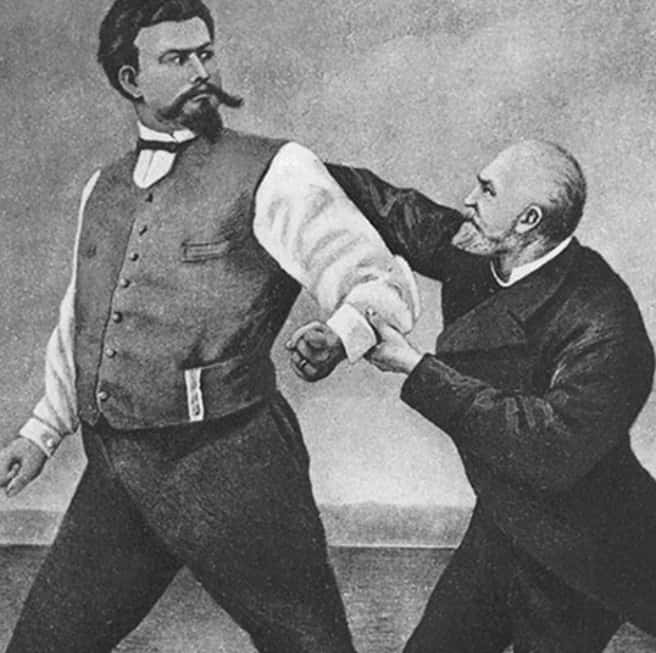 Munich et la Bavière, Louis II et Richard Wagner
Munich et la Bavière, Louis II et Richard Wagner
110. A Steamy Collection
Catherine the Great’s public and private images were two very different things. She secretly collected sensually-charged furniture, and even had a private cabinet adjacent to her suite of rooms. German combatants who raided the palace during WII claimed to have stumbled across the steamy boudoir full of furniture, and photographed it. Most of the photographs were lost in the conflict, and those that remain are believed to be the only surviving evidence of the furniture.
The furniture wasn't the only thing naughty in the Muscovite palaces: Catherine also employed full-time foot ticklers. A long-standing tradition for Russian royalty, foot ticklers would sing intimate ballads while tickling their master's feet to provide relaxation and arousal.
111. Hard Labor
Queen Anne had the hardest of times when it came to motherhood. She was pregnant 17 times over the course of 17 years, and only once did she give birth to a child who made it past the age of two. She miscarried a staggering 12 times, and four of her children didn't make it past infancy. Some medical historians suggest her terrible luck at parenthood was because she suffered from Hughes syndrome, an autoimmune disease that creates frequent blood clots.
Sources: 1, 2, 3, 4, 5, 6, 7, 8, 9, 10, 11, 12, 13, 14, 15, 16, 17, 18, 19, 20, 21, 22, 23, 24, 25, 26, 27, 28, 29, 30, 31, 32, 33, 34, 35, 36, 37, 38, 39, 40, 41, 42, 43, 44, 45, 46, 47, 48, 49, 50, 51, 52, 53, 54, 55, 56, 57, 58, 59, 60, 61, 62, 63, 64, 65, 66, 67, 68, 69, 70, 71, 72, 73, 74, 75, 76, 77, 78, 79, 80, 81, 82, 83, 84, 85, 86, 87, 88, 89, 90, 91, 92, 93, 94, 95, 96, 97, 98, 99, 100, 101, 102, 103, 104, 105, 106, 107, 108, 109, 110, 111, 112, 113, 114, 115, 116, 117, 118, 119, 120, 121, 123, 124, 125, 126, 127, 128, 129, 130, 131, 132, 133, 134, 135, 136, 137, 138, 139, 140, 141, 142, 143, 144, 145, 146, 147, 148, 149, 150, 151, 152, 153, 154, 155, 156, 157, 158, 159, 160, 161, 162, 163, 164, 165, 166, 167, 168, 169, 170, 171, 172, 173, 174, 175, 176, 177, 178, 179, 180, 181, 182, 183, 184, 185, 186, 187, 188, 189, 190, 191, 192, 193, 194, 195, 196, 197, 198, 199, 200, 201, 202, 203







